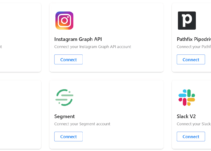As more SaaS applications are being developed and integrated with one another, it's important to understand the different types of authentication protocols available. Two popular authentication protocols for SaaS applications are OAuth and OpenID Connect (OIDC). In this blog post, we'll explore the differences between OAuth and OpenID Connect, and how each protocol can be used for SaaS integrations.
What is OAuth?
OAuth (Open Authorization) is an authentication protocol that allows users to grant third-party access to their resources without sharing their credentials. OAuth is widely used in SaaS applications, social media platforms, and other web-based services. The OAuth protocol works by granting access tokens to third-party applications, which can then access specific resources on behalf of the user.

OAuth consists of several components, including the client application, the resource server, and the authorization server. The client application is the third-party application that is requesting access to the user's resources. The resource server is the server that hosts the user's resources. The authorization server is responsible for verifying the user's identity and granting access tokens to the client application.
What is OpenID Connect?
OpenID Connect (OIDC) is an authentication protocol that is built on top of OAuth 2.0. OIDC is designed to provide user authentication and authorization for web-based applications. OIDC adds an identity layer to the OAuth protocol, allowing applications to authenticate users based on their identity providers.
OIDC works by exchanging ID tokens between the user's identity provider and the client application. The ID token contains information about the user's identity, such as their name, email address, and other attributes. The client application can then use this information to authenticate the user and grant access to resources.
Key Differences between OAuth and OpenID Connect
While both OAuth and OpenID Connect are widely used in SaaS applications, they have some key differences:
Authentication vs Authorization
OAuth is primarily an authorization protocol, while OpenID Connect is primarily an authentication protocol. OAuth is designed to grant third-party applications access to specific resources on behalf of the user. OpenID Connect, on the other hand, is designed to authenticate users based on their identity providers.
User Consent
OAuth requires user consent for the client application to access their resources. The user must explicitly grant permission for the client application to access their resources. OpenID Connect also requires user consent, but it is used for authentication purposes.
Token Types
OAuth grants access tokens to the client application, while OpenID Connect grants ID tokens to the client application. Access tokens are used to access specific resources, while ID tokens are used to authenticate users.
Scopes
OAuth uses scopes to define the level of access granted to the client application. Scopes define what resources the client application can access on behalf of the user. OpenID Connect also uses scopes, but they are used to define the level of access granted to the client application for authentication purposes.
When to Use OAuth vs OpenID Connect
OAuth and OpenID Connect have different use cases in SaaS applications. Here are some guidelines for when to use each protocol:
Use OAuth When:
- You need to grant third-party access to specific resources on behalf of the user.
- You need to provide limited access to specific resources, such as read-only access.
- You need to authenticate users based on their OAuth providers.
Use OpenID Connect When:
- You need to authenticate users based on their identity providers.
- You need to grant access to specific resources based on the user's identity.
Conclusion
OAuth is an important authentication protocol for SaaS applications. When choosing to implement OAuth, it's important to consider the specific use case of your integration project. However, implementing OAuth can be complex and time-consuming. That's where Pathfix comes in.

Pathfix provides a simple, easy-to-use OAuth integration solution for SaaS developers. With Pathfix, you can quickly and securely implement OAuth authentication in your SaaS application, without the need for extensive development resources. Whether you need to grant third-party access to specific resources on behalf of the user, provide limited access to specific resources, or authenticate users based on their OAuth providers, Pathfix can help you achieve a seamless authentication experience for your users.



